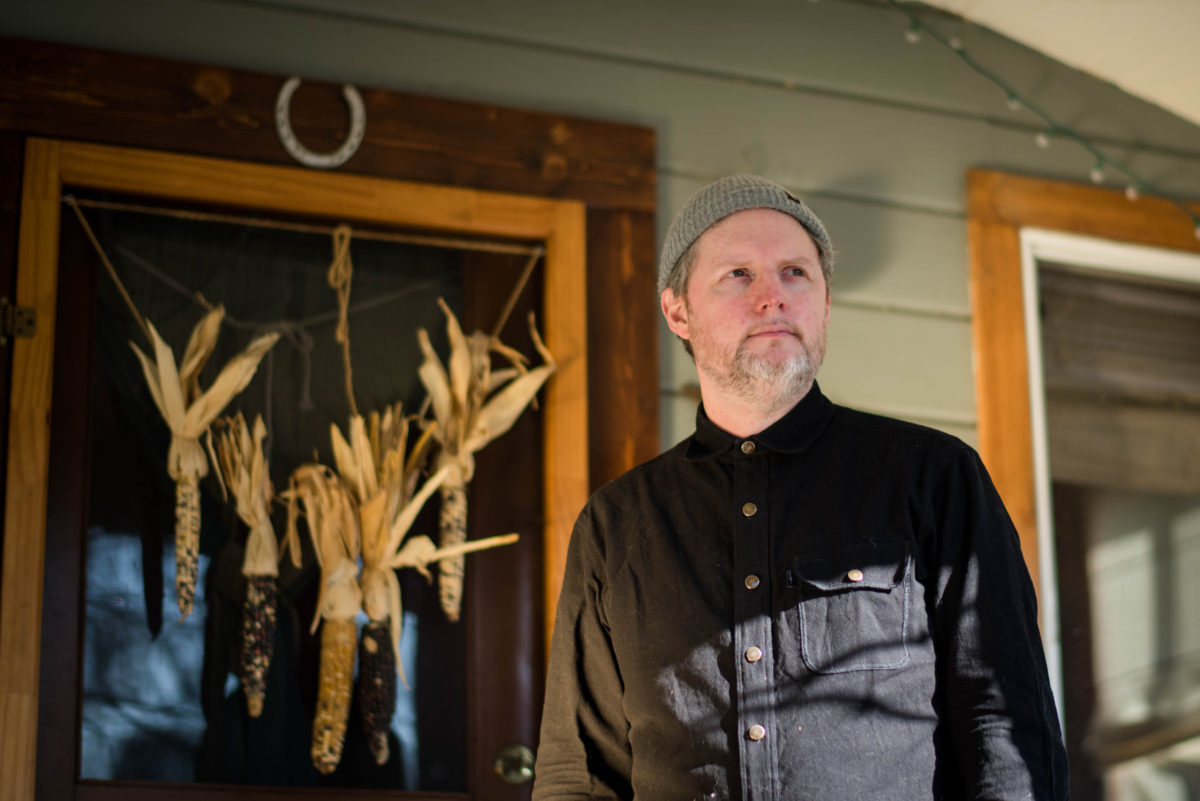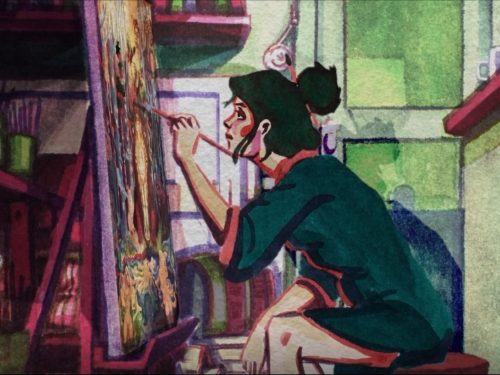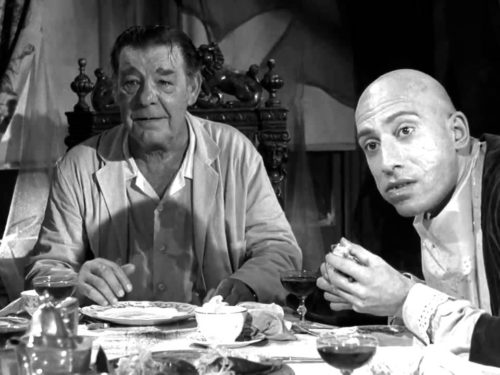Amid the backdrop of a changing city, Casey Neill and the Norway Rats created their most adventurous record yet
“Be not sad for all that’s happened here
The littered hearts and broken bodies
The days roll into each other
And the ghosts they grow in number”
— Casey Neill, “My Little Dark Rose”
While suffering through the inhumane hot wing gauntlet that is Sean Evans’ YouTube talk show, Hot Ones, famed chef Gordon Ramsay was asked to share his thoughts on various food trends populating the internet: charcoal ice cream, spaghetti bagels, sushi donuts. Of the latter Ramsay replied with trademark disgust. “What the fuck are these guys smoking? Did that come out of Portland?”
It’s no secret that Portland has morphed from a quiet, affordable artist haven into a flashier, spendier caricature of its former self. But to judge the city based only on its affinity for fusion foods, flannel and facial hair would be to discard Portland’s still-beating heart as a home for a thriving music scene. It just exists mainly in what Portland musician Casey Neill calls the “Gone World,” a place where the old spirits of the city frequent familiar haunts beneath the looming shadow of ‘progress.’
“I don’t know whether this is just hitting my 40s or if it’s just the acceleration of the world in general where these things that seem to be the way of the world — like corded phones or representative democracy — are just slipping away,” Neill said. “You can see that in Portland all the time, too. But then there’s still that old man bar in between them that’s not going anywhere, with the same people sitting on the stools who were there in 1998, you know? You pick up on the vestiges of the ‘Gone World’ in where we are now, but it’s still here.”
Driving through Neill’s neighborhood in Northeast Portland, neon cube buildings stand out like orange highlighter gashes against a peaceful backdrop of weathered bars, shops and apartments. Their coexistence feels like the embodiment of a pop-up advertisement declaring a passive-aggressive culture war on Portland’s grimier past. But, just blocks off of the main road, quiet neighborhoods of beautiful wooden homes with small yards remain the dominant residence type.
In his quaint home, Neill sat at the kitchen table on a cold, sunny Sunday afternoon in late February, sipping an IPA. He was dressed in gray from beanie to jeans and sat back in his chair with one leg crossed. Photos cut from magazines grace the wall above the table while string lights run the length of the vaulted ceiling. The dark wood paneling provides a calming ambiance, which his two 4-year-old cats, Osa and Mae, counteracted. A quarter-full squirt bottle stayed within arms’ length of Neill while Osa prowled from living room to kitchen and back like a caffeinated Cosmo Kramer. Mae hopped on the counters and rubbed her head against the eight-pronged moose antler atop the upright piano.
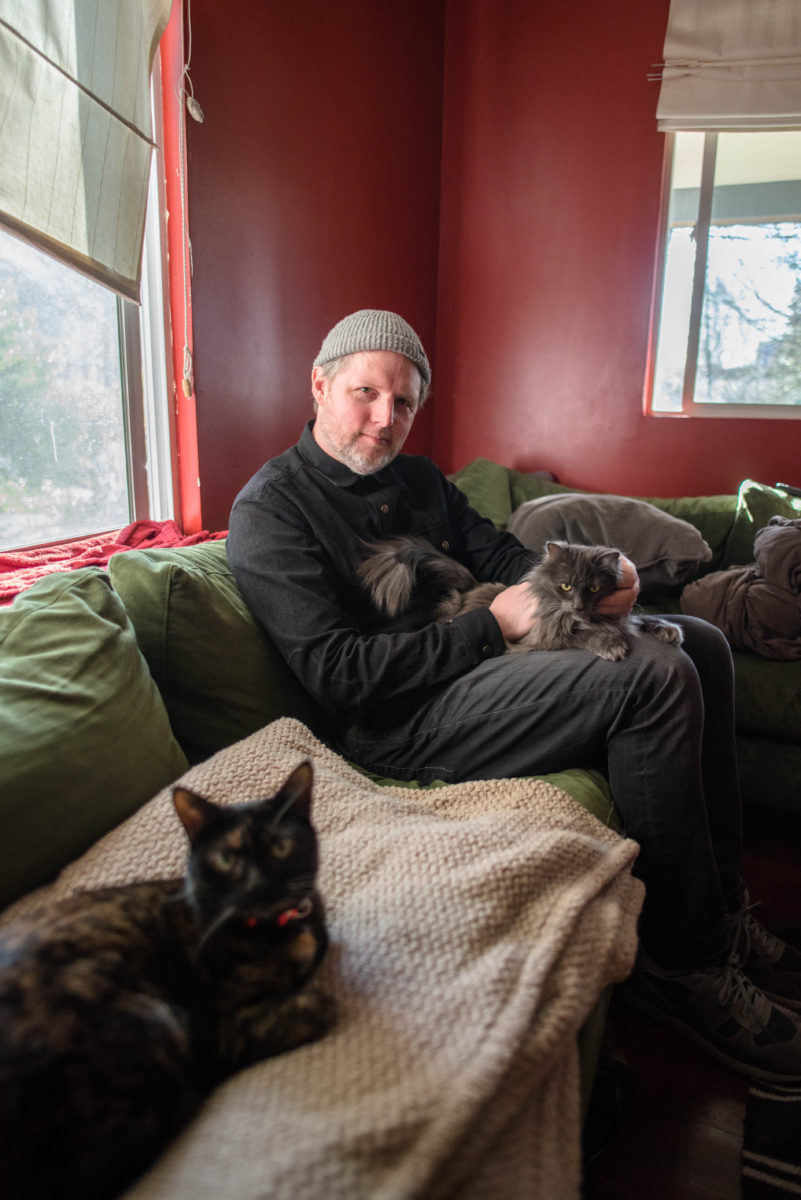
Change is an inevitable part of life for people and cities alike, but Neill doesn’t see the point of fighting progress. “I never want to be the person who’s like, ‘Don’t change things! I liked it better when I was a kid!’ he said. “That’s just boring.” As the city he’s called home since the ’90s has evolved beside him, his music has bloomed in tandem into its most adventurous spaces yet. Instead of nestling further into his musical comfort zone, Neill sought to redefine his Irish-folk-punk style and explore new sonic territory for his last record. The result is 2018’s Subterrene, what he describes as a “dystopic romance” and the unrivaled best album he has made. Joined by his band The Norway Rats — a rotating stable of well-respected Portland musicians including Jenny Conlee-Drizos (The Decemberists, Black Prairie), Chet Lyster (The Eels), Jesse Emerson, Anita Lee Elliot (Viva Voce, Slang) and Joe Mengis (The Eels) — Neill suffused a lifetime of stories, sounds and experiences into the record that feel as familiar and futuristic as the city he resides in.
Before the Rats
Neill was born in Newhaven, Connecticut, in 1971 into a hospital room with a nurse singing Irish folk songs. His family spent time in Taiwan and Tokyo before moving back to the tri-state area. His father, Peter, was the President of the South Street Seaport Museum in New York from 1985 to 2005, has written multiple books including The Once and Future Ocean and is now a founding director of the World Ocean Observatory, a non-profit dedicated to preserving the health and sustainability of the oceans. Through his parents he developed an appreciation for the environment and activism, but also a love for music not normally found on the radio. “Being around maritime museums, I was around folk musicians singing shanties so that clearly somehow affected what I do,” he said. Tom Waits, Rickie Lee Jones and Bruce Springsteen’s Nebraska were common soundtracks in their household. With his friends, he explored various musical phases, but was turned on to traditional Scottish and Irish music from rock artists. “Me and all my friends got super into Van Morrison in our teens, listening to Veedon Fleece and Astral Weeks constantly,” he said. But the revelatory link between rock and Irish music was The Pogues. “[They] blew the doors open and linked it all back to The Clash.”
Neill’s high school girlfriend was a year older and attended Lewis & Clark College in Portland during his senior year. He fell in love with the Pacific Northwest at age 17 after visiting her at school. “It just seemed like paradise,” he recalled. “I’d never seen mountains like that ever in my life. It was unbelievable.” He moved to Olympia, Washington, in 1989 to attend Evergreen College and study ethnomusicology. In addition to the beautiful landscapes, he found a seemingly inconsequential music scene that would leave a legacy far larger than anyone in the state capitol could have predicted. “The culture in Olympia, in all kinds of ways, was kind of amazing,” Neill said. “You had no concept of it at the time. Like, there were five of us standing at this show. Someday the world is going to care a lot that this happened! That’s not generally how it goes!” But those shows drawing tiny attendances were often by bands like Bikini Kill and Sleater-Kinney, who were beginning to make international waves with the Riot Grrrl movement. After seven years in Olympia, he spent a year in Seattle before moving to Portland in 1996.
He began recording his own songs, and the self-released cassettes Wooden Shoes (1993) and Pawprints (1994) mark the start of his discography. The Student Environmental Action Coalition helped spark his career as a touring musician by sending him to colleges across the country to play songs and discuss Northwest labor and environmental issues. At night he would perform his own brand of Irish-tinged acoustic punk concerts at nearby clubs. His 1996 record Riff Raff proved to be a hit with that community as “Riffraff” and “Dancing On The Ruins” became rally songs for anti-logging organizations. The record blends punk and folk, politics and love, though he feels he was labeled a political artist because of it. “The politics have a way of taking up all the air in the room. It’s what people then zero in on,” he said. “Some of the politics on those early records is strident in a way that I actually really appreciate now.” He credits the record with properly starting his career.
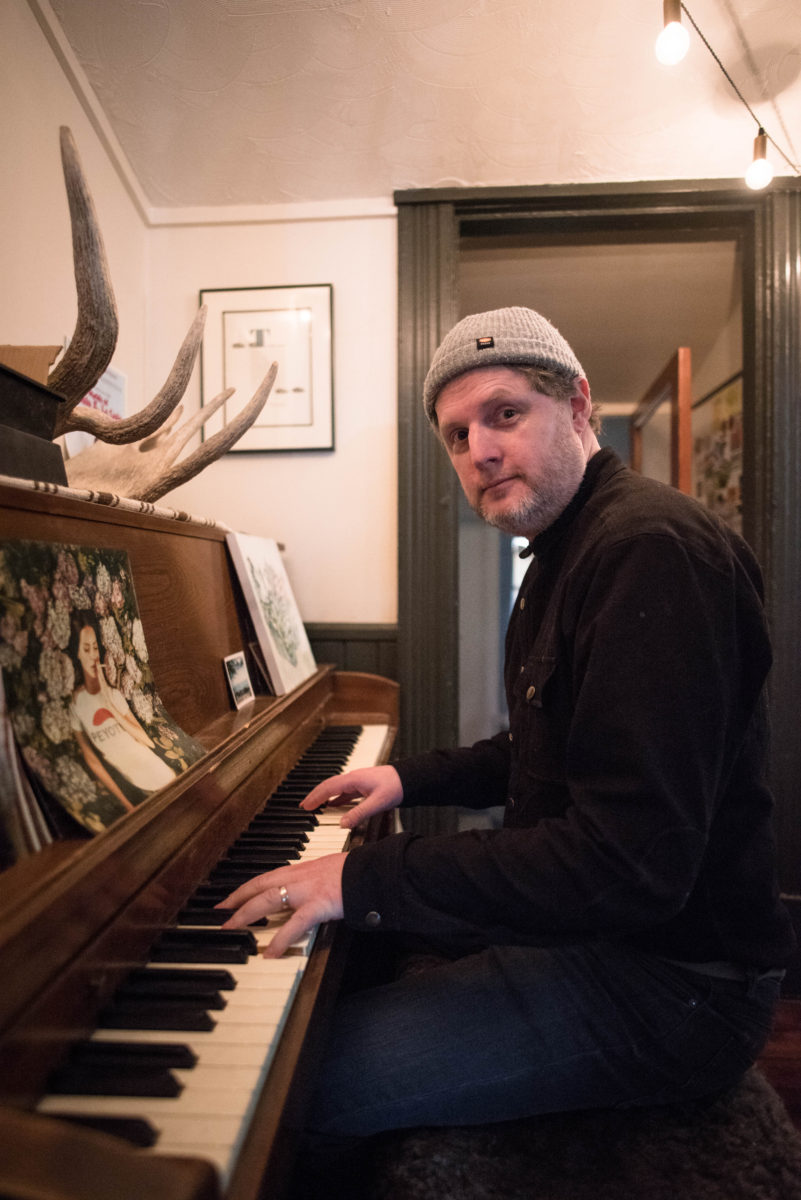
His first break came with the 1998 Pete Seeger tribute album Where Have All The Flowers Gone. Seeger himself selected Neill’s contribution, “Old Father Hudson-Sailing Down Dirty Stream,” to be included alongside entries from Bruce Springsteen, Roger McGuinn, Ani DiFranco and Billy Bragg, among others. Neill and Seeger struck up a friendship and Seeger asked Appleseed Recordings to sign Neill. He recorded three albums with them, starting with his 1998 eponymous record, then 1999’s Skree and Portland West in 2001. Although he enjoys the records, Neill admits they are not in his regular rotation. “It’s hard for me to go back and listen to them because my voice was really, really different. It was really high and reedy, then my voice changed dramatically somewhere in there.”
With the maturation of his voice came a development in his music. For Brooklyn Bridge, Neill teamed with producer Johnny Cunningham, an internationally recognized Scottish fiddle player. Cunningham felt the songs Neill was playing would be better suited with backing from an Americana rock band rather than the Irish trio he had in mind with Hanz Araki on flute. “I’ve seen your record collection. All you do is listen to the Clash!” Cunningham said to him. So he moved to New York for three years and they began to assemble a new electric-leaning band. The group they formed planted the seeds for The Norway Rats. But Cunningham died in December 2003 of a heart attack at age 46. Brooklyn Bridge would eventually be released in 2007, but Neill admits he was lost after Cunningham’s death. “I spent the next few years trying to figure out what the hell to do,” he said. “King Neptune” and Subterrene’s “In The Swim” pay tribute to Cunningham’s effect, but Neill decided his best move was to return to Portland and start another band.
His Beloved Accomplices: The Norway Rats
Since returning to Portland, Neill has spent time in a variety of bands, including a recently finished stint with Big Bridges. Renowned Japanese guitarist Takashi Ohashi wrote all the music for that group while Neill contributed the lyrics. Lately he has become a fixture in The Minus 5, Scott McCaughey’s (Young Fresh Fellows, Baseball Project) main Portland project. McCaughey slowly integrated Neill into the band after he sang backup and played acoustic guitar on a few songs one night. McCaughey eventually invited him to bring his electric and play a full set. From there he was integrated into a position as a lead guitarist, a role he had never filled prior, alongside Peter Buck (R.E.M., Filthy Friends). “It’s part of the amazing way Scott is,” Neill said. “He likes it when people are coming at it out of your comfort zone. The ways that playing in that band has helped me grow are huge. I owe him a lot on many, many levels.” One hallmark of the Minus 5 is a constantly changing lineup that has sometimes never met before they perform together. But due to the musicians’ shared backgrounds, it’s rarely an issue.
Read our profile on Scott McCaughey’s path back to music after a stroke
When it came time to follow Cunningham’s advice and form an Americana band, he drew from this same pool of musicians, a group of friends whom he had grown with in the Portland music scene. Some of them had remained regional fixtures while others had gone on to tour internationally — namely in a group called The Decemberists. The Norway Rats were born on the 2010 album Goodbye To The Rank & File. Since the beginning, Jenny Conlee-Drizos, Chet Lyster and Jesse Emerson have remained the core group of Norway Rats contributors in the studio and on stage. Ezra Holbrook played drums and produced the album. The Norway Rats’ second album, 2013’s All You Pretty Vandals is a collection of stories about characters scattered across New York City and Portland. Vandals features the same core with Decemberists John Moen joining on drums and Chris Funk as producer. “I feel so lucky to play with the musicians I play with,” Neill said. “They’re superheroes to me and that they want to work on my music is a huge honor.” Much like The Minus 5, players come and go with their touring cycles, each bringing a different set of strengths to any occasion.
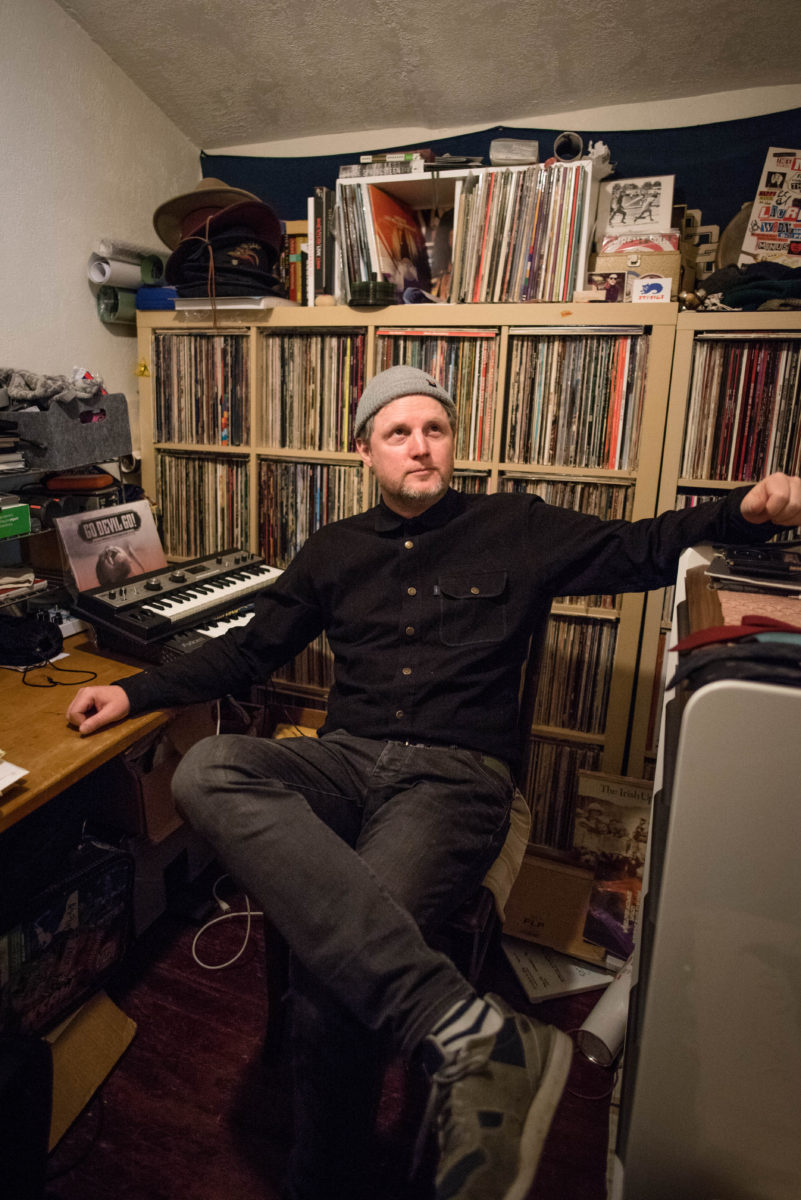
His bandmates offer a harmonious balance to his lyric-driven writing style. “I’m a big believer in bands, and I love how it kind of grows over the years and people contribute to it and add to the sound,” he said. “Because I’m lyrics first, that’s why I always surround myself with better musicians than myself so the music rises to the same spot.”
For Subterrene, Neill brought Lyster demos that were 60 to 70 percent completed. As longtime collaborators, Lyster is familiar with Neill’s vocal tics, favorite melodies and songwriting tendencies. They completed the album together and revamped Neill’s style with new instruments, sounds and concepts. “You’re always trying to trick yourself into not going to those [familiar] places. Chet had been playing with me long enough that he knew what those were and he knew which ones he especially didn’t like, so it was like, ‘Hey we’re going to steer away from that sort of thing.’” One of Lyster’s main goals was to replace acoustic guitars from the recordings in order to test new waters as much as possible. Over a year-and-a-half, Neill and Lyster would record at a “leisurely” pace with no more than a few hours spent per month working on the material.
“The whole record went to a place we weren’t expecting — except we were trying to get there for sure,” he said.
Neill’s songwriting style is an ever-changing experiment, but he says he most often begins writing on acoustic guitar or piano with retro drum samples to supply a built-in groove. He builds his music around the song’s feel. “The lyrics have to reach people emotionally,“ he said. “The point of a songwriter, the point of any art, is to get to the places of how we are and represent it somehow.” He did so by unintentionally creating a concept record that highlights the necessity of companionship in troubling times in a changing world. Neill said he began writing Subterrene with abstract themes populated by different characters, but when Lyster chose what would become the album’s tracklist, he felt the album take shape as a story of a central couple travelling through each song as a step on their journey from lawlessness to deathlessness.
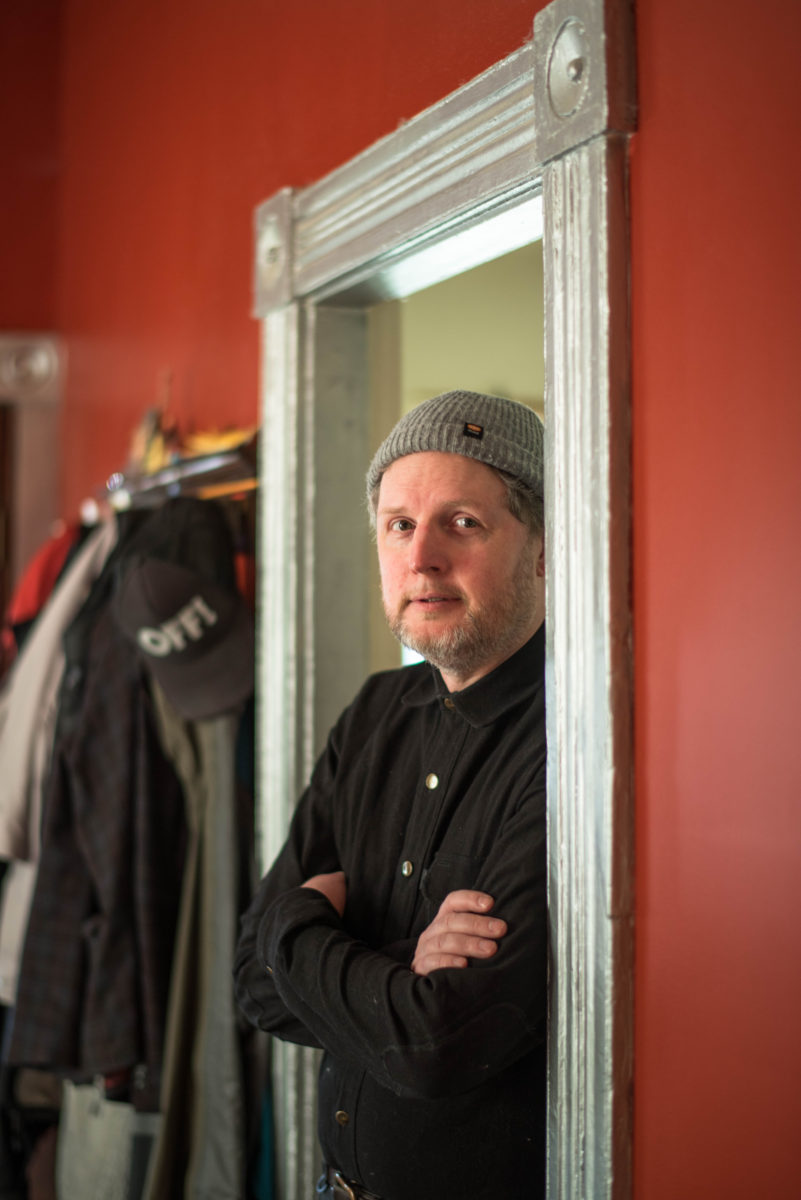
Set in a futuristic “Gone World” based on recent international travels, his hometown and writings from late journalist Matthew Power and Ursula K. Le Guin, the album dives through a changing backdrop of parallel realities. It is largely about leaving the past behind and accepting the future — even if the future depicted is that of a “dystopic romance” between two graffiti artists. It also covers the invasive nature of technology, facing the future and finding respite from it all through human interaction.
“Siphoners” is the unofficial centerpiece and turning point where Neill combines all the album’s main elements into a single piece. After spending time in Asia, Neill tried to integrate the overwhelming experience of seeing screens everywhere into the song in a way that felt natural. He also based the song on Payatas dump in Quezon City in the Philippines. Matthew Power wrote about the scavengers of the 50-acre dump, and the song grew into a metaphor for technology as the heap itself. Similar to Neil Young’s Earth (2016), when “Siphoners” hits its technological peaks, Neill’s voice is manipulated, guitars spit out stutter-delayed lines and digital flourishes fly overhead. This makes the chorus that much more jarring when all of the artificial sounds are tossed aside and acoustic guitar, flute and bells float in while he sings about finding respite in the simplicity of human touch.
“The way it’s affecting politics and the way it’s affecting our minds, I kind of think the Internet has ruined the world,” Neill said. “But I still participate in it. I completely do. You wake up and look at the rectangle of doom [cell phones] and you just want to go back to bed immediately and say fuck it. But for every story like that, there’s just incredible stories of people doing incredible stuff in response to all this. If you look for them, at least for me, it sets my head right and inspires me to try to be like that and be on that team.”
In the album’s most soothing track, “In The Swim,” Neill seeks spiritual guidance from mentors both past and present. Scott McCaughey helped write the song and sings backup; Peter Buck adds guitar. But it is also an address to Johnny Cunningham who told him to put the Norway Rats together in order to refocus in the musical vein he grew up with: all things Joe Strummer, a splash of The Pogues with the humanity of Bruce Springsteen characters. “I wrote it after Bowie and Prince died, but it’s also about when you lose people in your life — mentors, parents — the things they gave to you or the power they had is now yours to carry on. That’s where that song lives. I’m not much of a spiritual person, but that’s as close as I get.”
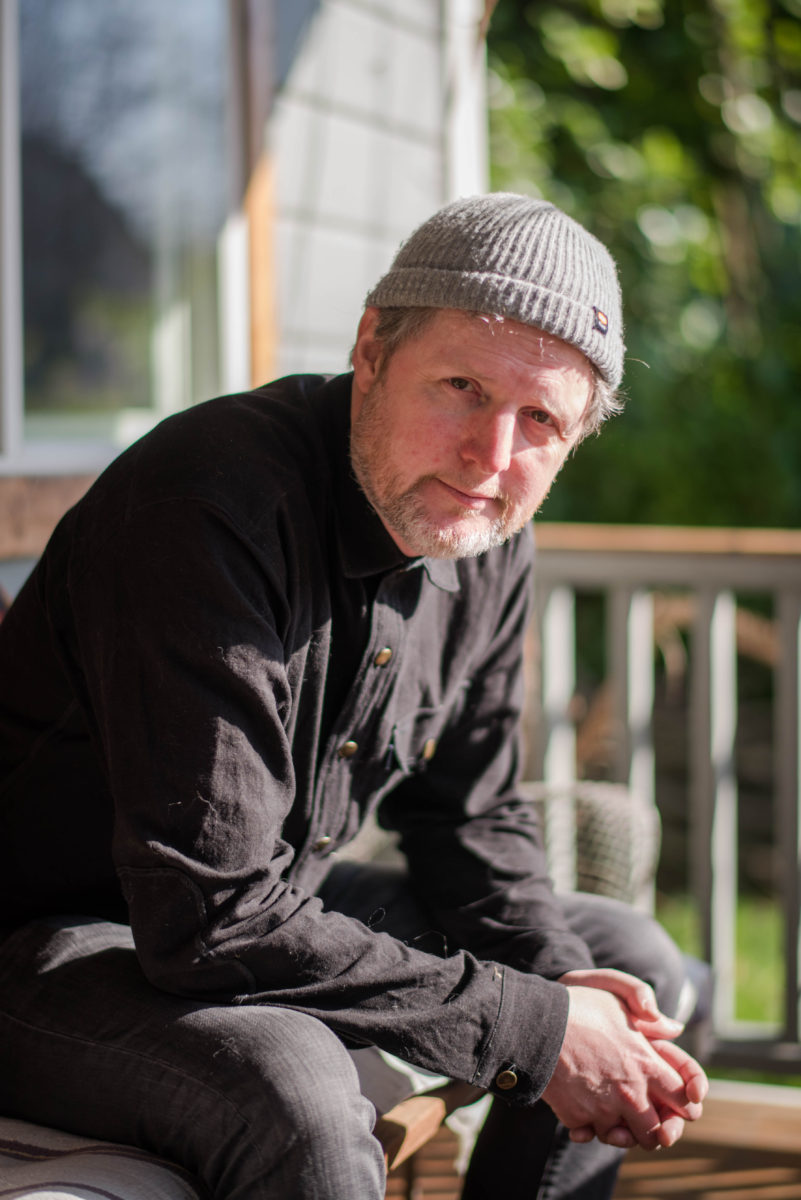
In defiance of today’s 24-hour binge-and-purge instant gratification news cycle, Neill concludes the album with its timeless guiding credo: “Get high / Live low / Stay alive, you know / We will be deathless, you and I.” For all of its dark themes with monsters lurking in the trees, murderers showing mercy and lost souls seeking salvation, Subterrene echoes Portland’s growing pains. “I’ve never thought it has to get worse before it gets better because usually the people saying that are not the people it’s going to get worse for,” Neill said. “Where you find hope is with the people you’re with and your friends and family. That matters more maybe than it ever has in some ways.” Through The Norway Rats’ intent to differentiate its sound from the past, the album leaves listeners in a more hopeful place where not all change is a dirty word. It is instead about preserving the memories of the past while finding a way to push forward with hope.
Follow Craig and Split Tooth Media on Twitter
Casey Neill and The Norway Rats‘ music is available on Bandcamp
(Split Tooth may earn a commission from purchases made through affiliate links on our site.)

